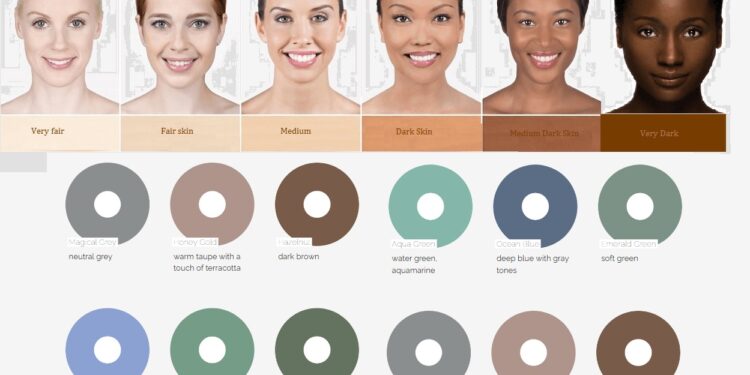Keratopigmentation Colors by Color Classification and Compatibility with Skin Types
Introduction
Keratopigmentation is a medical technique used to change the color of the cornea for cosmetic or therapeutic purposes. The colors used play a fundamental role in achieving natural and harmonious results with the skin and eye color.
Types of eye colors
Eye colors vary due to the difference in the amount and composition of melanin in the iris. The main types include the following:
Brown eyes: The most common worldwide, and contain the highest percentage of melanin.
Blue eyes: Result from the reflection of light due to the lack of melanin.
Hazel eyes: A mixture of shades of brown and green with golden touches.
Green eyes: One of the rarest colors, resulting from a mixture of melanin and light scattering.
Gray eyes: A rare color formed by a special distribution of fibers in the iris.
Genetic and environmental factors affect these colors, giving each eye a distinctive character.
The most popular colors in Keratopigmentation
Neutral Grey
Honey Gold (warm taupe with a terracotta undertone)
Hazelnut (dark brown)
French Blue (medium blue)
Jade (cool green with muted undertones)
Olive (deep green with light brown undertones)
Aqua Green (blue-green, aquamarine)
Ocean Blue (deep blue with gray undertones, currently out of stock)
Emerald Green (soft green, currently out of stock)
Color classifications used in keratopigmentation
The colors used can be classified into three main categories:
Natural Colors: These include shades of brown, honey, and amber. They are used to give the eye a natural appearance that suits most skin tones.
Cool Colors: Such as blue, gray, and green. They give a calm appearance and suit people with light or medium skin.
Warm Colors: Such as amber, gold, and copper. They are especially suitable for people with dark or olive skin.
Skin color and its effect on color selection
Skin tone plays a major role in determining the appropriate colors:
Fair skin: Cool colors such as gray and light blue suit it.
Medium (wheatish) skin: Natural colors such as honey and hazel harmonize with it.
Dark skin: Warm colors such as amber and gold suit it.
Original eye color and iris
Light iris: It is easy to change its color to light or cool shades.
Dark iris: Needs dark or strong colors to achieve a natural look.
Age and color preferences
Young people: Prefer bright colors such as blue and green.
Old people: Prefer natural colors such as brown and amber.
Genetics and color science
Genetics affect how light is absorbed and colors are reflected in the eye, making some colors appear more natural on certain people.
Effect of lighting on color appearance
Lighting plays an important role in color perception, as cool colors can appear brighter in natural lighting, while warm colors appear deeper in dim lighting.
Conclusion
Achieving a natural and harmonious appearance in keratopigmentation requires a deep understanding of the factors that affect color compatibility with people. Therefore, it is essential to consult a specialist doctor to ensure satisfactory and safe results.


















